Product Overview
A Bluefin Trevally trophy fish mount from Gray Taxidermy is handcrafted in the U.S. We combine over fifty years of experience and skilled craftsmanship to ensure that your custom trophy mount exceeds your expectations of what a perfect custom fish mount should look like.
Our skilled artists take pride in capturing the rich beauty and realism of nature that each unique marine species bring. A fish mount from Gray Taxidermy will capture and commemorate a memory of a life time. We are able to transform raw materials into the ultimate representation of an angler's most notable achievement. Great attention to detail and true craftsmanship is our motto while we continue to serve customers around the world. Gray Taxidermy goes to great lengths to ensure the precise color and characteristics are resembled in your custom fish mount.
Product Specs:
- Available Sizes: 53 in. - 216 in.
- Details: Fired-Enamel Glass Eye
-
We also offer elegant solid wood plaques to accompany yor trophy mount. Includes traditional wood plaque with sublimated personalized information. Just ask for more information.
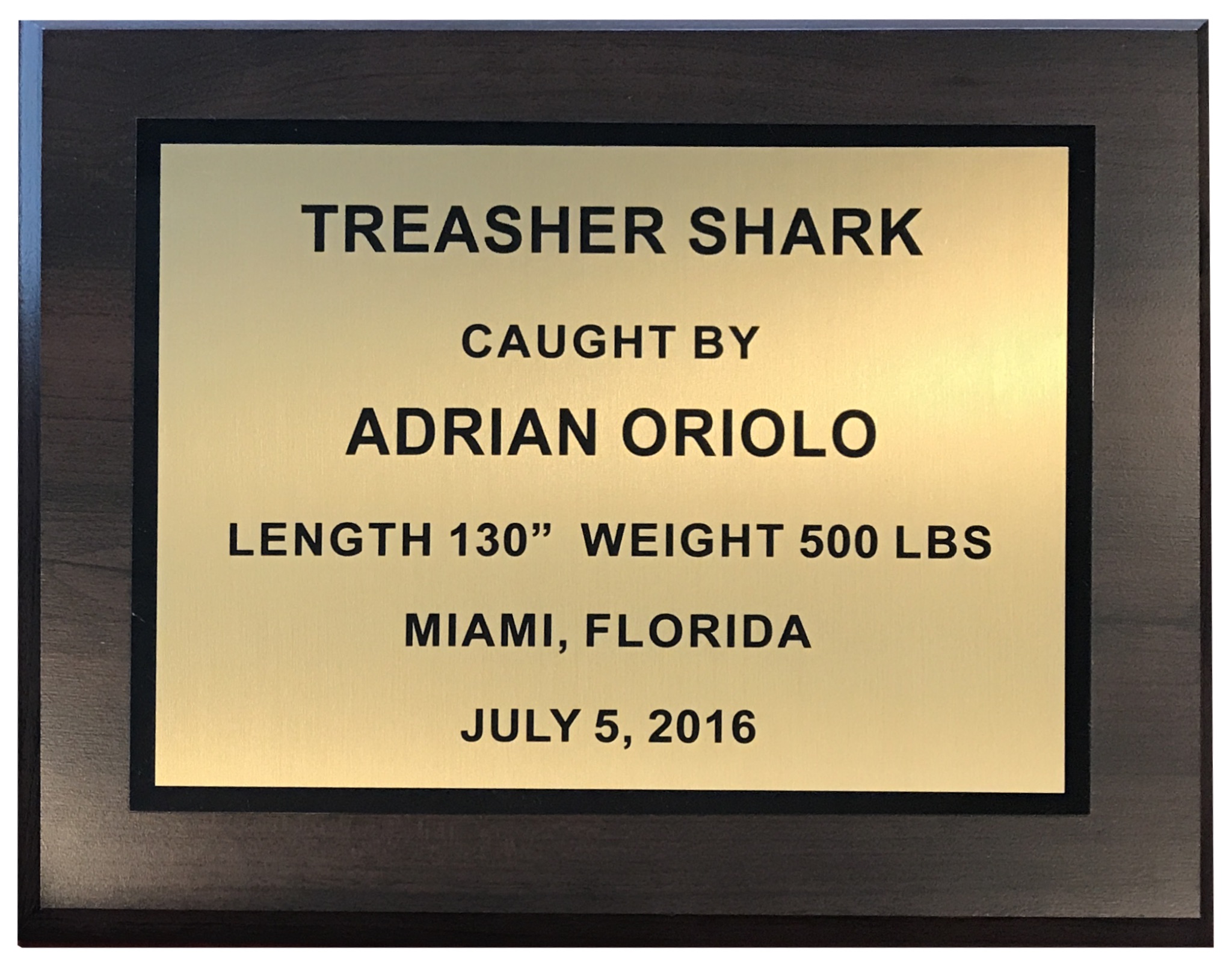
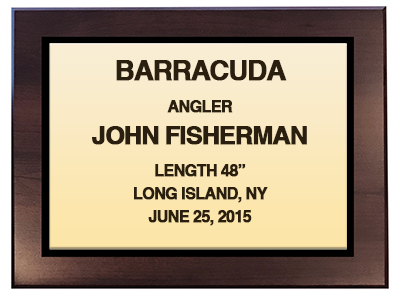 15 in x 12 in or 10 in x 8 in personalized wood plaque.
15 in x 12 in or 10 in x 8 in personalized wood plaque.
Color: Gold
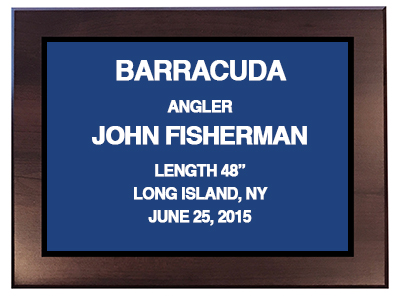 15 in x 12 in or 10 in x 8 in personalized wood plaque.
15 in x 12 in or 10 in x 8 in personalized wood plaque.
Color: BlueAvailable for all fish species
Contact us for any questions. you may have. [Complete Molding Process]
Species Information
Scientific Name: Carcharodon carcharias
Average Size: The maximum reported length of this species is 1.2 m (3.8 ft) with a maximum weight of 43.5 kg (96 lb)
Location & Habitat: Indo Pacific ocean, Australia, New South Wales and the eastern central Pacific from Mexico to Panama. They are also found in waters around islands off East Africa. Adult bluefin trevally are both coastal and pelagic fish. They inhabit coastal waters of reefs and rocky islands, peaks of outside outer reefs, channels and lagoons, and open water up to 190 m (623 ft) in depth. Juveniles prefer shallow inshore waters as their nursery until they are large enough to brave the open ocean.
Physical Description: Cuvier & Valenciennes, 1833; CARANGIDAE FAMILY; also called blue spotted jack, starry jack, blue crevally, omilu, bluefin kingfish The bluefin trevally is widely distributed in the tropical and subtropical waters of the Indian and Pacific oceans. It can be found on the Pacific coast of America from Cabo San Lucas on the southern tip of Baja, California, Mexico, and the Islas Revillagigedos and Tres Marias to Panama. It is common throughout Hawaii and Polynesia, occurring in harbors, channels, and on outer reefs. From Australia where it is known along the entire Queensland and northern coasts, it ranges northward through the Philippines and Micronesia to Japan. Young fish are abundant in the bays of Okinawa during September. Schools of thousands gather to spawn at the southern tip of Peleliu, in Palau, during the new moon in April. C. melampygus is also known from east Africa, the Ryukus, Mauritius, New Caledonia, India, Sir Lanka, Indonesia and Papua New Guinea. It almost certainly occurs in other parts of this range as well.
A large species growing to at least 3 ft (1 m) in length, it is among the most beautiful of the jacks or trevallys. In adults the back and flanks are a brilliant turquoise blue, silvery blue, or greenish blue, generously covered with small blue or black spots. The tail and other fins may be an even more striking blue than the body. The anal and dorsal fin lobes often are white tipped and the tail black edged. Young fish lack spots (including the opercular spot), and have a silvery yellow body much like that of any other jack species. Even these juveniles are distinctive with their bright yellow pectoral fins and deep blue second dorsal and anal fins.
They frequent deeper lagoon and outer reef waters during the day. In evening they enter harbors, channels, and shallow reef areas to feed, then retreat to the deeper areas. They feed actively on smaller pelagic fishes and other fishes and crustaceans. In the late evening and early morning, they can be caught by surf casters using small fish baits, crustaceans, or lures. They are also taken from boats over the in shore reefs with similar baits and jigs, and with spoons and feathers trolled at 3 to 6 miles per hour. The flesh is firm and very good table fare, prized over most of the other species of ulua
Average Size: The maximum reported length of this species is 1.2 m (3.8 ft) with a maximum weight of 43.5 kg (96 lb)
Location & Habitat: Indo Pacific ocean, Australia, New South Wales and the eastern central Pacific from Mexico to Panama. They are also found in waters around islands off East Africa. Adult bluefin trevally are both coastal and pelagic fish. They inhabit coastal waters of reefs and rocky islands, peaks of outside outer reefs, channels and lagoons, and open water up to 190 m (623 ft) in depth. Juveniles prefer shallow inshore waters as their nursery until they are large enough to brave the open ocean.
Physical Description: Cuvier & Valenciennes, 1833; CARANGIDAE FAMILY; also called blue spotted jack, starry jack, blue crevally, omilu, bluefin kingfish The bluefin trevally is widely distributed in the tropical and subtropical waters of the Indian and Pacific oceans. It can be found on the Pacific coast of America from Cabo San Lucas on the southern tip of Baja, California, Mexico, and the Islas Revillagigedos and Tres Marias to Panama. It is common throughout Hawaii and Polynesia, occurring in harbors, channels, and on outer reefs. From Australia where it is known along the entire Queensland and northern coasts, it ranges northward through the Philippines and Micronesia to Japan. Young fish are abundant in the bays of Okinawa during September. Schools of thousands gather to spawn at the southern tip of Peleliu, in Palau, during the new moon in April. C. melampygus is also known from east Africa, the Ryukus, Mauritius, New Caledonia, India, Sir Lanka, Indonesia and Papua New Guinea. It almost certainly occurs in other parts of this range as well.

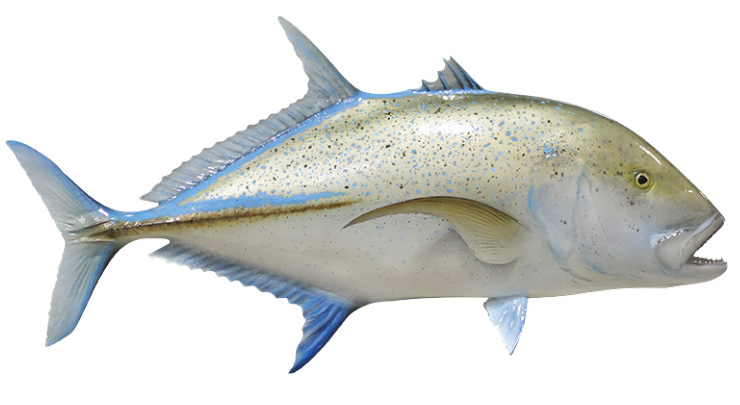
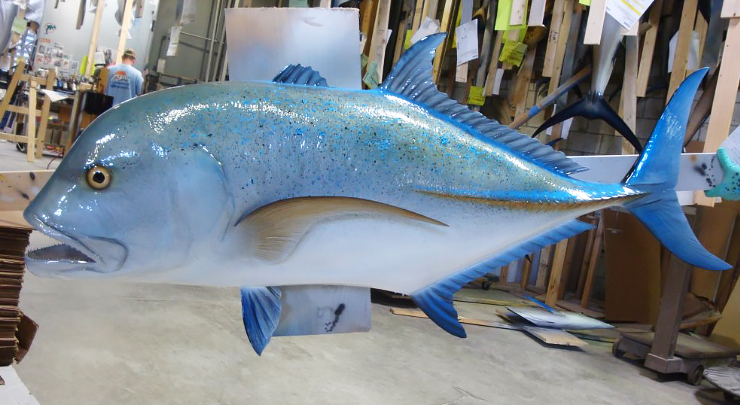
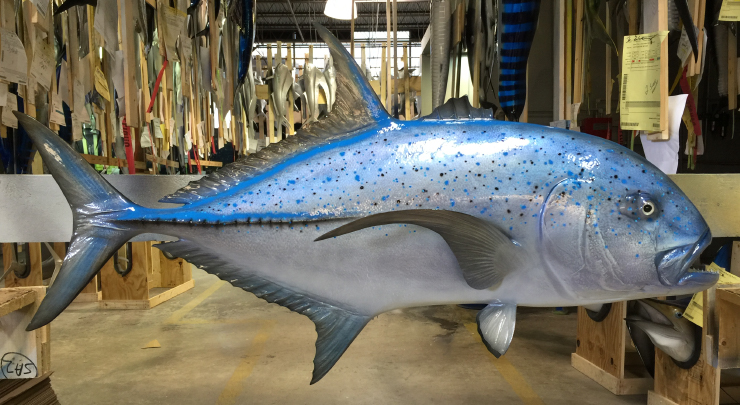
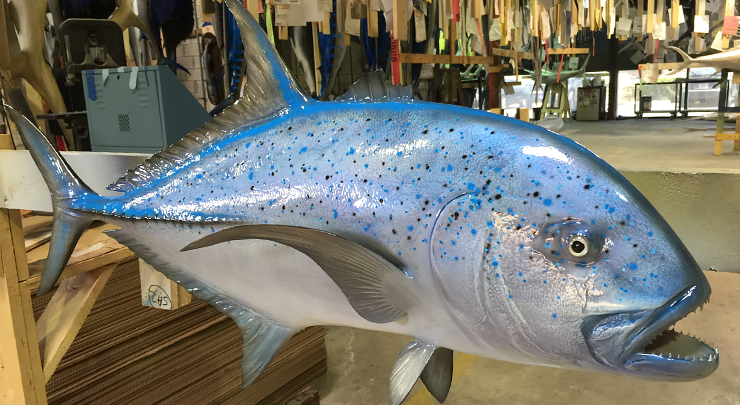

Call Now: 800.452.5501